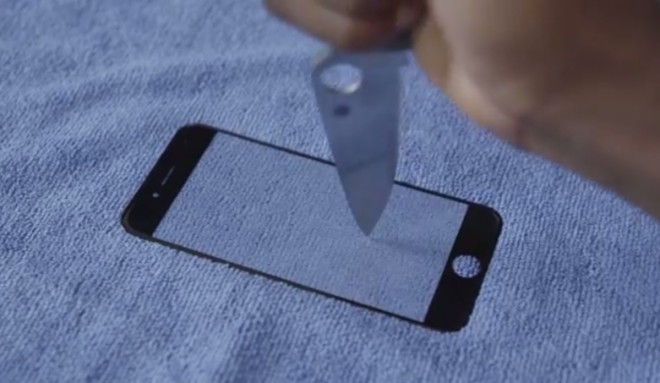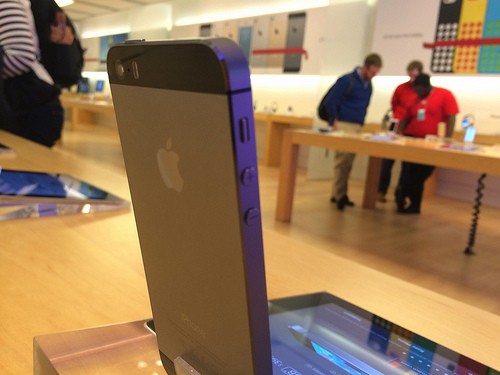Why the iPhone 6 Makes Apple In Undervalued (AAPL)
Post on: 16 Март, 2015 No Comment

Apple ‘s ( NASDAQ: AAPL ) iPhone 6 launch is still about four months out if the tech giant follows its typical annual product launch schedule. But investors shouldn’t wait until the launch to analyze the phone’s possible impact on Apple’s business. The market is forward looking, so it’s worth taking a look at its potential ahead of the launch.
What’s new in the iPhone 6?
Every time Apple launches a new iPhone, there are typically one or two key features that differentiate the new phone from its predecessor. Inherently, investors should hope the key feature Apple plans to use to drive sales to the new device is compelling. For the iPhone 4s, 5, and 5s, those features were Siri, a new form factor, and Touch ID, respectively.
What is the rumored differentiating feature in the iPhone 6? A larger display. Though this difference may seem menial at first, there’s actually a massive market for smartphones with larger displays that Apple hasn’t even began to tap into yet. Numerous data points and studies support this view. Consider, for example, a ChangeWave survey that showed considerably more pent-up demand for an iPhone 6 with a larger screen size than the demand seen before the iPhone 5 and 5s launches. And if this data isn’t convincing enough, consider Apple’s own internal documents of a slide titled Consumers want we don’t have that shows the massive chunk of smartphone shipment growth in 2013 that came from smartphones with displays larger than 4 inches. If Apple does, indeed, launch an iPhone with a larger display as the rumor mill suggests the company will do, this could be a major boon for Apple stock.
MacRumors renderings. by Ferry Passchier, of the potential 4.7-inch and 5.7-inch sixth-generation iPhone lineup. Photo used with permission.
Just how big?
Putting two of the more recent data points and predictions together, we can come up with our own estimate of just how large of an impact the iPhone 6 could have on Apple’s bottom line.
First, consider that supply chain checks by Morgan Stanley’s longtime Apple analyst Katy Huberty point to 20% higher sales for the iPhone 6 over the iPhone 5s. But 5s sales, of course, didn’t account for 100% of Apple’s iPhone sales in the quarters following the 5s launch. That leads us to our second data point: Needham & Company analyst Charlie Wolf estimated recently that the 5s accounted for 71% of Apple’s total iPhone sales in the company’s most recent quarter.

With these data points in mind, it’s clear that Apple’s flagship phone is the primary driver of Apple’s iPhone business as a whole. So, with a 20% boost to Apple’s iPhone 6 sales over iPhone 5s sales expected by suppliers, it would be conservative to assume Apple’s total iPhone sales in 2014 could grow by about 15%. But since Apple’s iPhone business is also its most profitable business, its marginal impact on Apple’s bottom line would likely be greater than its impact on Apple’s top line. So, assuming the rest of Apple’s businesses grow in the high single digits, on average, from 2013 to 2014, and that iPhone sales account for more than half of Apple’s revenue, it’s reasonable to estimate that 15% growth in iPhone sales could boost Apple’s total net income by a similar figure.
What would that do to Apple’s valuation? The company’s forward price-to-earnings ratio would be 13. But that doesn’t take into consideration Apple’s shareholder-friendly program to repurchase large amounts of Apple stock. With this program in mind, Apple’s forward P/E ratio could be as low as 11.5. Compare that to the S&P 500’s forward P/E ratio of 16.
Sure, even this conservative scenario may prove to be too optimistic. But the illustration makes one thing clear: Apple stock is still undervalued.
Speaking of an undervalued opportunity.
Apple recently recruited a secret-development dream team to guarantee that its newest smart device was kept hidden from the public for as long as possible. But the secret is out, and some early viewers are even claiming that its everyday impact could trump the iPod, iPhone, and the iPad. In fact, ABI Research predicts that 485 million of these devices will be sold per year. But one small company makes this gadget possible. And its stock price has nearly unlimited room to run for early in-the-know investors. To be one of them, and to see Apple’s newest smart gizmo, just click here !














